Stop counting sheep: how to design a bedroom that promotes deep sleep
Written by
02 August 2022
•
5 min read

Staying up counting sheep? You’re not alone, with inadequate sleep – either in duration or quality – impacting up to half of all Australian adults. While sleep requirements vary with individual needs, the Australian Sleep Health Foundation recommends around 7 to 9 hours of sleep for adults. While poor sleep can be attributed to a number of lifestyle factors, it helps to have a serene, soothing space designed with sleep in mind.
Designing a bedroom environment with the key intention of achieving and maintaining deep sleep taps into the principles of sleep hygiene. According to the Sleep Health Foundation, sleep hygiene refers to “healthy habits, behaviours, and environmental factors that can be adjusted to help you have a good night’s sleep.”
As one of the most intimate spaces in your home, it’s essential to cultivate a bedroom that speaks to both your aesthetic and emotional sensibilities. Fortunately, even minute changes can make a major impact on your sleep quality. Here’s how some of our favourite designers have combined science with beautiful design to get their clients nodding off in style.
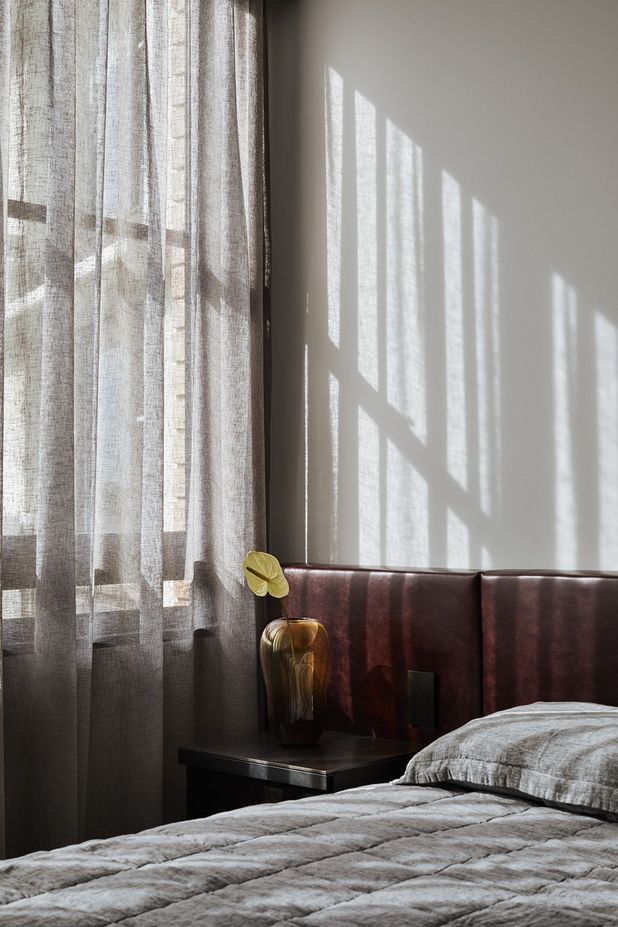
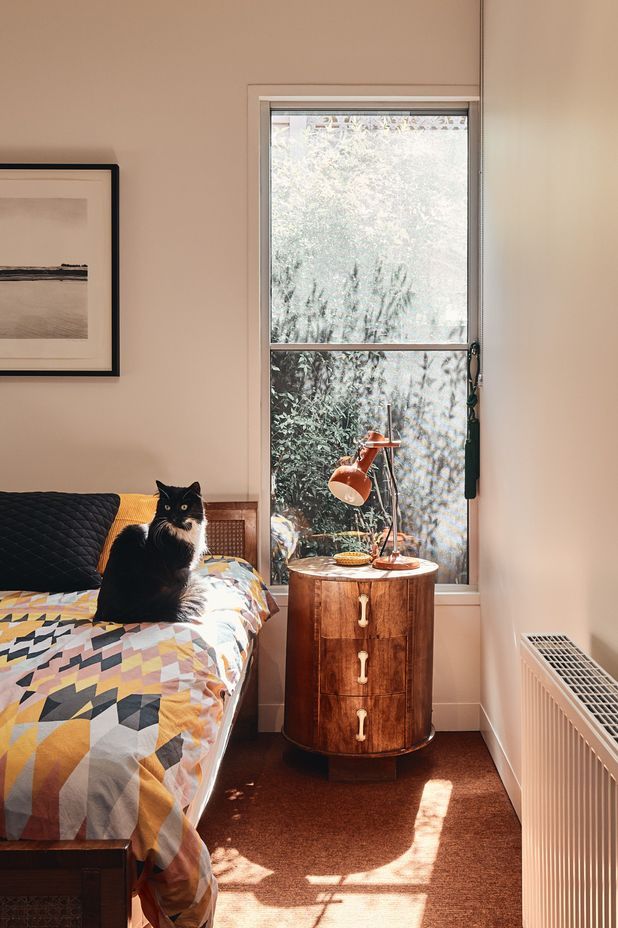
Layered lighting
Light has a powerful effect on the body’s circadian rhythm, with your body clock registering light as a signal to be awake and dark as a sign that it's time to fall asleep. The circadian clock is most influenced by light and dark two hours before bed, during sleep, and up to an hour after waking up. This is why it's good to open the curtains and let natural light flow in upon waking.
In the same vein, lowing your exposure to bright lights in the hours before heading to bed and making your bedroom as dark as possible during sleep can help in falling and staying asleep. Layering your lighting is an ideal way to strike the right balance between letting light in during the day and keeping it out at night; sheer curtains or shades can be teamed with blackout curtains to get the best of both worlds. Longwood by Studio Prineas uses sheer linen curtains in a shade of grey that matches the bedspread, bathing the room in soft light and making for a calming way to start the day.
In terms of in-room lighting, soft lighting from a mix of lighting sources is best. Avoid harsh overhead lighting and downlights; instead, opt for a combination of sconces or table lamps for reading, and warm flush-mount, recessed or pendant lighting. In Split House by FMD Architects, a terracotta-toned table lamp allows for light pre-bed reading, without disrupting the circadian rhythm.
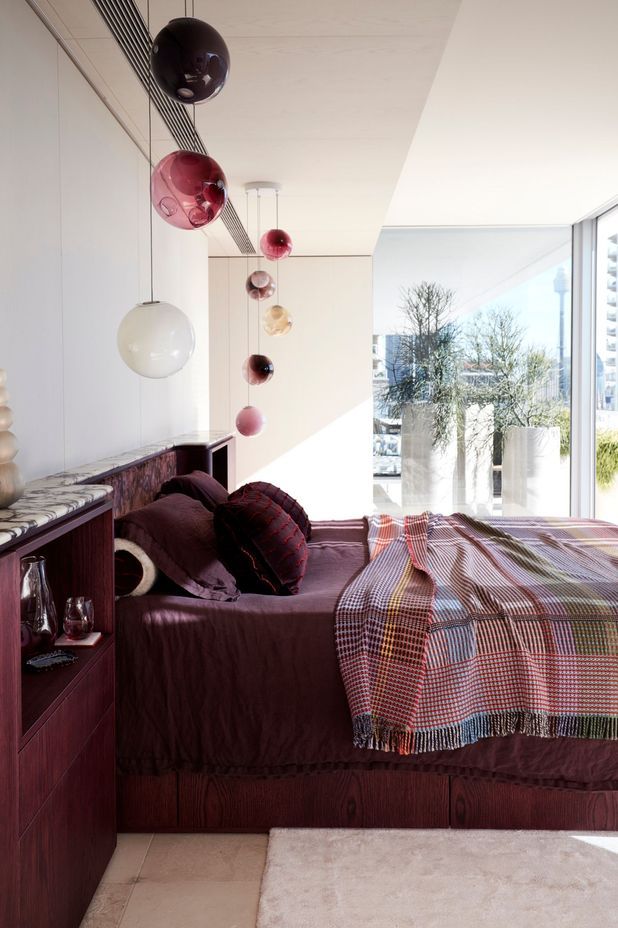
Soft sheeting
Quality bed linen can turn a good slumber into a great one. Ideally, crawling into bed at night should feel akin to re-entering the womb. With an array of bed linens available, selecting the right one often comes down to personal preference. For those who prefer a cooler environment, linen or bamboo sheets work well, while those who favour warmer temperatures may have better luck with flannel, Egyptian cotton or Tencel.
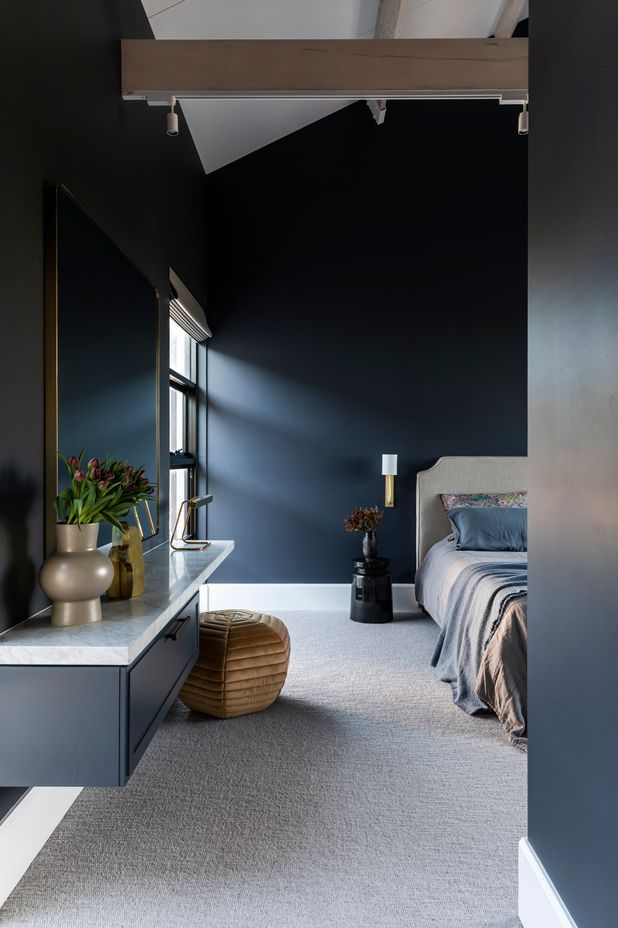

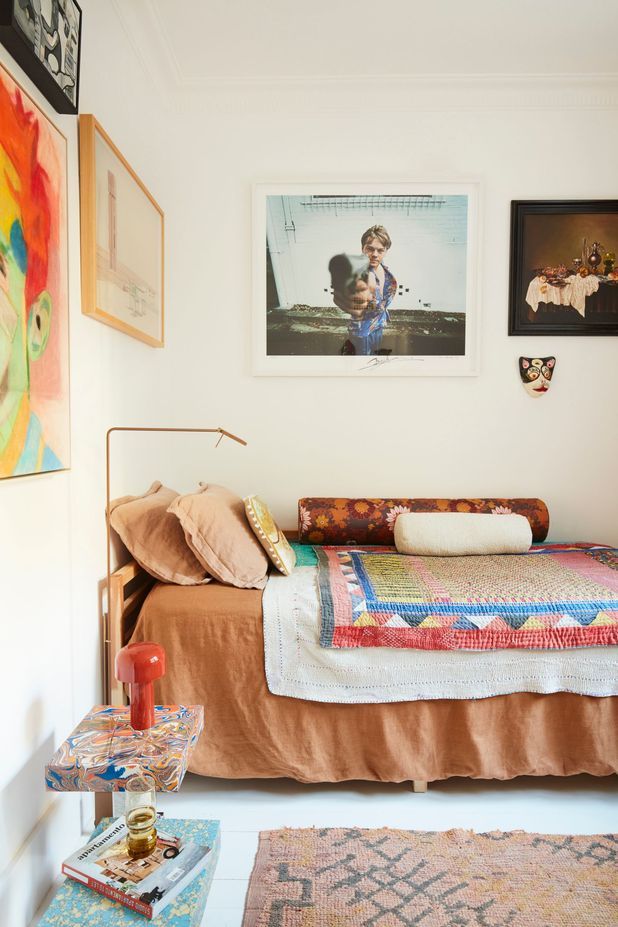
Calming colours
Colour is a powerful tool, with the ability to subtly influence our mood and emotions. When it comes to the bedroom, certain hues have proven to promote better sleep. Cool colours such as blue, purple, lavender and green are typically recommended, while neutral hues are also a safe bet. Blue has often been deemed the best colour for bedrooms, due to its calming effect on the brain. A study on university students in a residence hall showed a correlation between a relaxed mood and blue interiors, with green and violet also considered top contenders. Though light blue has been considered the most soothing due to its muted nature, deep blue also has the same effect while creating a more contemporary, fashion-forward aesthetic as showcased in the bedroom of Bischoff Residence by Tom Mark Henry.
However, when it comes to colours, it's best to opt for what makes you relaxed and happy. A blue bedroom isn't going to promote good sleep if you can't stand blue. Freedman House by Nouveau Architects opts for almost industrial-like monochromatic simplicity, while Bait by YSG Studio opts for a neutral base with fun pops of colour.
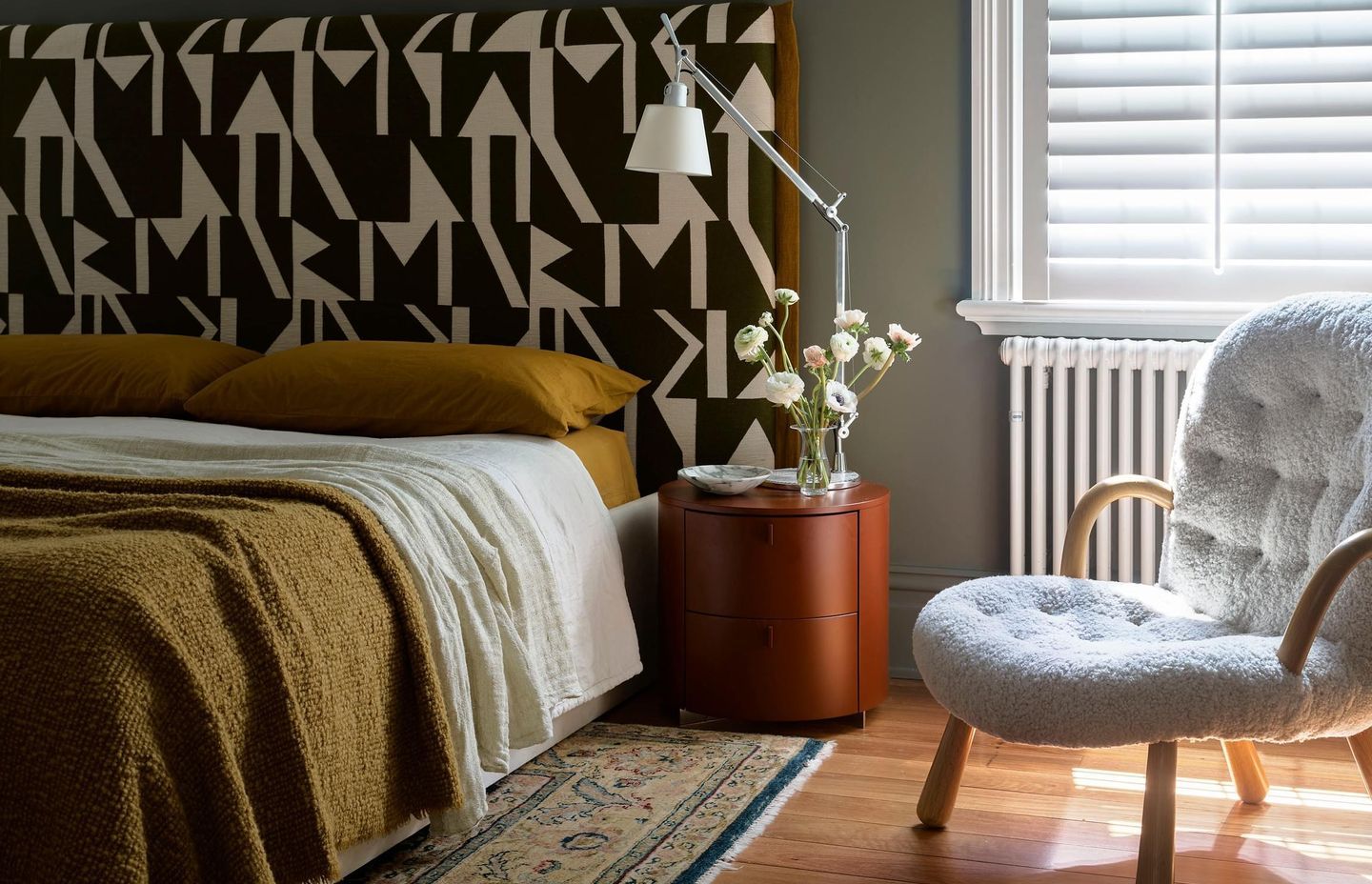
Silent night
External noise can contribute to disrupted – and therefore lower quality – sleep. Rugs can help reduce footstep noise from one partner waking up early or coming to bed later, with plush materials contributing to a luxurious space. Fabrics such as shag, wool, silk or faux fur work well, with statement rugs also adding interest to a space without overwhelming it, as seen in Hue House by Arent&Pyke. In addition to rugs, fabric wall hangings and tapestries can aid in noise reduction.
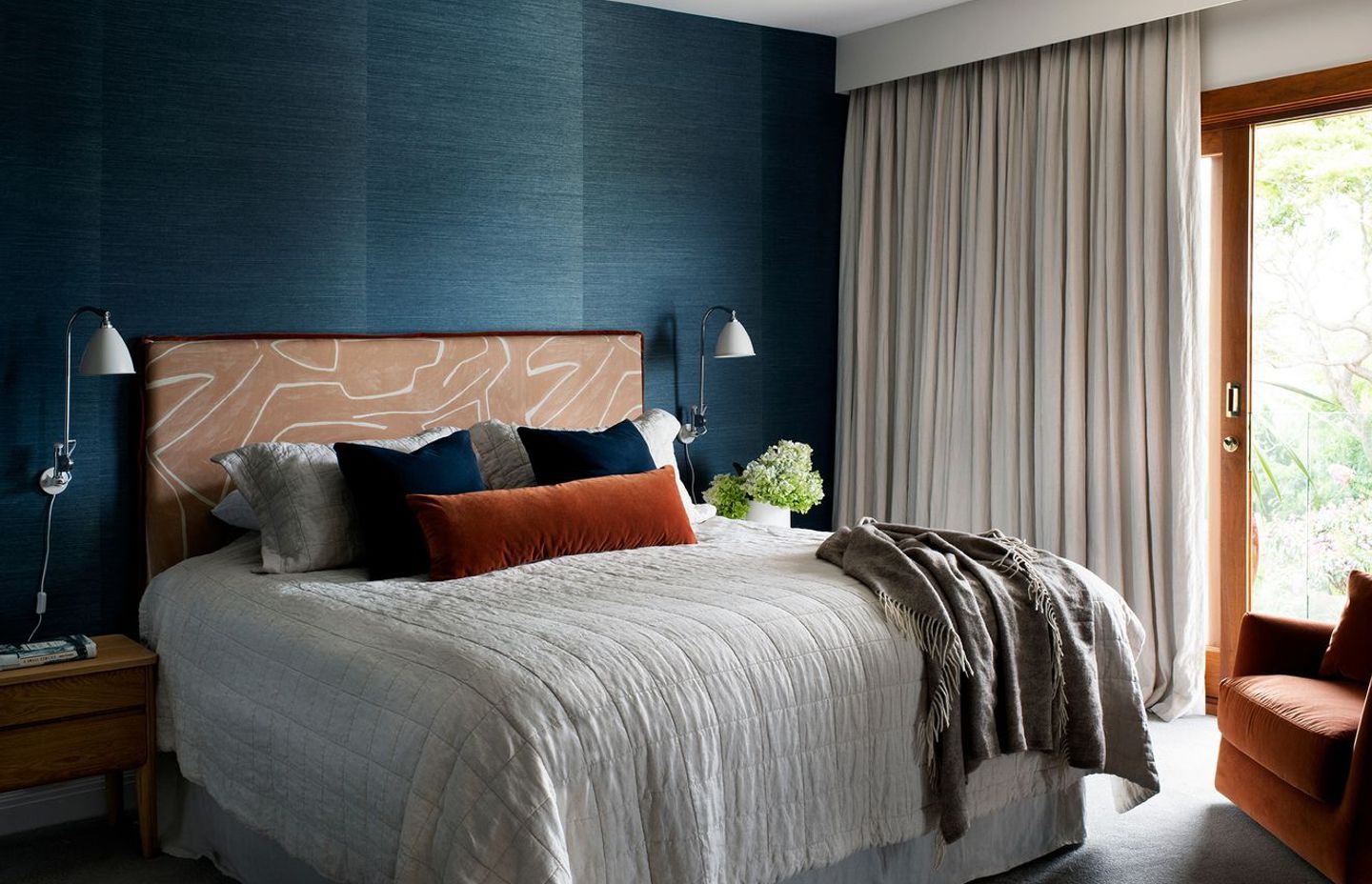
Eyes on the prize
Design harmony is important in any room, but especially so in the bedroom. In a space that prioritises good sleep, the bed should act as the focal point, grounding and centring the room. Bed height should be considered, with the ideal bed neither too tall or short for you or the room its in. Rooms with high ceilings can afford slightly taller bed frames, while more compact spaces may benefit from a low-profile frame. Keeping the bed the centre of attention can also be achieved by placing nightstands on either side, as seen in this Mosman abode by Cloth + Stone Designs.
Dealing with a small floor plan? These styling tricks will help make compact rooms feel spacious.
Words by Tanisha Angel